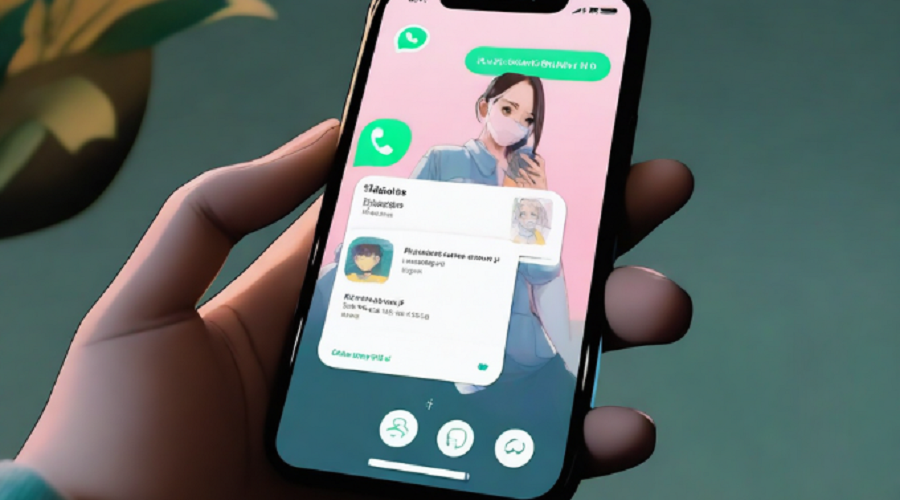
How to Know if Someone Uninstalled Whatsapp
Have you ever encountered a scenario where WhatsApp is unable to deliver your messages? We’ve all been there: you send a message, anxiously waiting for the double blue tick to indicate that it was received. Only to find out later that the recipient has vanished from the WhatsApp universe.
On the other hand, there are times when you might question whether someone has removed WhatsApp. How to know if someone uninstalled WhatsApp?
In this post, we’ll look at several signs and techniques to help you determine whether or not someone has said goodbye to the platform.
Whatsapp: Distinguishing Between Delete and Uninstall
Keep in mind that these two are entirely different actions if you’ve been trying to figure out what the true differences between them are.
Your profile will be deleted from the Whatsapp server permanently when you deactivate your account. You will also be removed from all groups, and have your payment history, Google Drive backups, message history, and outstanding payments canceled.
But uninstalling WhatsApp only gets rid of the app from your phone. Your message history is still accessible on the server, and your profile will remain active. Furthermore, it’s simple for someone to locate you on WhatsApp and message you. You must, however, reinstall WhatsApp to view those messages.
How to know if someone deleted their WhatsApp account?
When someone uninstalls WhatsApp, it can be challenging to directly receive a notification or an alert. However, certain signs and indirect clues can provide valuable insights into their WhatsApp status.
-
Last Seen and Online Status
One of the first indicators is the “Last Seen” and “Online” status of the contact. If the person has uninstalled WhatsApp, these statuses will no longer be visible to you. It’s important to note that privacy settings could also impact the visibility of these statuses.
Example: You notice that a contact’s “Last Seen” timestamp remains static or disappears altogether, indicating a potential uninstallation.
-
Mutual Contacts
See if any of your mutual contacts are still on WhatsApp. They might know important details about the individual in question. Friends or family who are mutually acquainted can verify if the person has truly removed WhatsApp or if there is another explanation for their absence.
For instance: When you inquire about Tom’s WhatsApp usage with a mutual friend, they confirm that Tom has deleted the app.
-
Profile Picture and Status Updates
Uninstalling WhatsApp often leads to the removal of profile pictures and status updates. If a contact’s profile appears blank or displays an older photo, it might be a sign that they are no longer using the application.
Example:
A friend’s profile picture suddenly disappears, and their status remains unchanged for an extended period, suggesting a potential uninstallation.
-
No Message Delivery Receipts
When someone uninstalls WhatsApp, your messages may no longer show the double blue checkmarks, indicating that the message has been delivered and read. This absence of delivery receipts can be a strong indicator of an uninstallation.
Example:
You send a message to a contact, and unlike before, the double blue checkmarks don’t appear, hinting at a possible uninstallation.
-
No Updates in the “Last Seen” Timestamp
Regularly check the “Last Seen” timestamp of the contact. If it remains static or does not update over an extended period, it could be a sign that the person has uninstalled WhatsApp.
Example: You notice that a friend’s “Last Seen” timestamp remains the same for several days, indicating a potential absence from the platform.
-
Test Call or Message
To confirm your suspicions, consider sending a text message or making a WhatsApp call. If the message remains with a single gray tick (indicating it was sent but not delivered) or if the call does not go through. It may be a sign that the person has uninstalled WhatsApp.
Example:
You send a message to Sarah, and it stays with one gray tick for an extended period without changing to two blue ticks, signaling that the message was not delivered.
-
Absence from WhatsApp Groups
If the person was part of WhatsApp groups, their absence from these groups could be a telltale sign. Uninstalling the app often results in automatic removal from groups.
Example:
You realize that a colleague is no longer a member of the work-related WhatsApp group, signaling a potential uninstallation.
How to Confirm and how to know if someone uninstalled their WhatsApp?
While the aforementioned signs provide strong indications, they are not foolproof. To confirm if someone has uninstalled WhatsApp, consider the following methods:
-
Check Contact’s Phone
If you have access to the person’s phone, check for the presence of the WhatsApp application. If it’s missing, it’s a clear confirmation of uninstallation.
-
Mutual Contacts Inquiries
If you share mutual contacts with the person in question, discreetly inquire if they have observed similar signs or if they can confirm the uninstallation.
-
Contact the Person Directly
The most straightforward approach is to reach out and ask the person directly. They might provide information about their decision to uninstall WhatsApp or share the reasons behind it.
How do you know if someone deleted their WhatsApp with WaLastseen?
The WaLastseen app now can track an individual’s online activities. When attempting to monitor someone and ensure their safety, this can be extremely useful.
This feature lets you know when someone has gone offline by letting you see when they switch from online to offline on WhatsApp. This feature also allows you to track how long someone has been away from their computer or phone, which can give you an idea of what they might have been up to.
Conclusion
In summary, in the dynamic world of digital communication, How to know if someone uninstalled Whatsapp involves keen observation and understanding of various indicators.
While there’s no direct notification for uninstallations, the signs mentioned above, when considered collectively, can offer valuable insights. Remember to respect privacy and approach the situation with sensitivity when confirming such changes in someone’s communication habits. Always communicate openly and directly if you have concerns, rather than making assumptions based on these indicators.


Leave a Reply